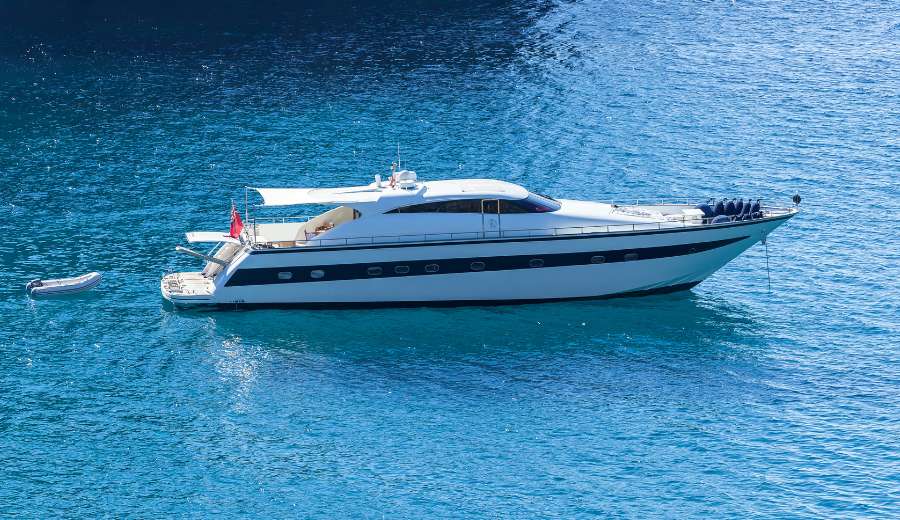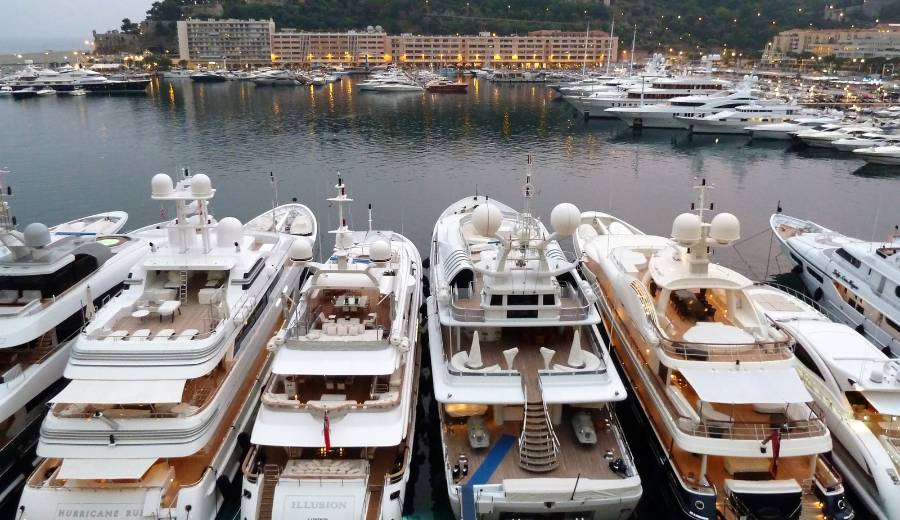In our blue planet, over seventy percent of its surface is composed of vast, majestic bodies of water. These expansive seascapes have, throughout history, held a mysterious allure, beckoning mankind to embark on epic journeys of discovery, trade, and even war. It is a captivating allure that has fueled the design and creation of diverse watercraft.
When one contemplates the construction of a vessel meant to carry a considerable group of 25 individuals, it is not simply a matter of calculating dimensions and capacity. There is, after all, much more to a yacht than its physical measurements. It is akin to designing an ecosystem, a self-contained biosphere, a floating habitat that not only sustains but also nurtures its passengers.
Understanding the Necessary Dimensions

Determining the size of a yacht for 25 people is akin to understanding the spatial requirements of a pack of zebras on the savannah. It is a balance of space, resources, and symbiosis. Typically, an average yacht can comfortably accommodate 8-10 people, with a length overall (LOA) of around 80-100 feet. To extrapolate for our group of 25, we could look towards super yachts, which start at about 100 feet and can stretch to over 500 feet.
However, this might be an overestimation; it would be similar to providing each zebra with its own vast plain. To cater to a group of 25, we can think about providing each person with the comfort and amenities of a standard yacht multiplied by the number of passengers. Hence, a yacht of approximately 200-250 feet LOA would suffice, assuming about 8-10 feet per person.
An Oasis Amidst the Blue Expanse
The considerations of a yacht go beyond the mere numbers of its size. After all, a yacht is more than a floating shelter; it is a home, an entertainment venue, a place of relaxation and adventure. It must carry the same balance of resource allocation and symbiotic relationships we see in natural ecosystems.
Just as a lion needs its territory to roam and hunt, each passenger aboard our metaphorical ark must have sufficient space for their personal quarters, not forgetting shared spaces such as dining and entertainment areas. Amenities like the saloon, dining area, open decks, swimming pool, and other recreational facilities also take their fair share of space, contributing to the overall dimensions of the yacht.
The engine room, crew quarters, galley, storage, and other functional areas also factor into the spatial equation, often making up a surprisingly large part of the vessel. If we parallel the yacht to a rainforest, these areas serve as the unseen roots, vital for the function and sustainability of the ecosystem, yet hidden from the vibrant flora and fauna above ground.
Navigating the Hydrodynamic Aspect
The size of a yacht, particularly one intended to carry 25 people, also impacts its performance and handling characteristics. In the world of marine creatures, this would be the equivalent of an elephant seal, massive yet capable of navigating the oceans with surprising grace and efficiency.
The hydrodynamic design of a yacht, which includes the shape of the hull and the type of propulsion used, plays a key role in determining its speed, stability, and fuel efficiency. Larger yachts generally have displacement hulls that are designed for stability and comfort. However, they often need more powerful engines to propel them, which can lead to increased fuel consumption.
Yacht Models for 25 People

The allure of the sea invites the spirit of innovation and resilience, leading to the crafting of remarkable vessels. One such innovation is the creation of yachts built of concrete, or more accurately, ferrocement. Initially embraced due to the scarcity of traditional shipbuilding materials during the World Wars, the use of ferrocement in yachts has presented a cost-effective and durable alternative.
Despite their rarity, these ferrocement yachts, much like the Platypus in the animal kingdom, have made their distinctive mark. We shall delve into exploring the characteristics of these yachts, particularly focusing on those capable of accommodating a group of 25 individuals.
🚢 Hartley Ferro-cement Yachts
Hartley Boats, a New Zealand-based company, has produced numerous designs for ferrocement boats and yachts since the mid-20th century. Renowned for their practicality and economy, Hartley ferro-cement yachts have found enthusiasts across the globe.
The Hartley 'Great Barrier Express' model, with a length of 98 feet, is a notable example of a yacht with a capacity for approximately 25 people. The design balances spacious accommodation with efficiency, providing generous living quarters while maintaining sea-kindliness and handling ease. As a testament to the durability of ferrocement, many Hartley yachts from the 1960s and 70s continue to sail today.
🚢 Samson 'C-Breeze'
The Samson 'C-Breeze' is a testament to the versatility of ferrocement as a yacht-building material. This 60-foot motor-sailer was designed for long-range cruising and living aboard, making it well-suited for accommodating groups.
While smaller than the Hartley 'Great Barrier Express', the 'C-Breeze' optimises space usage with an efficient layout. It includes spacious communal areas, comfortable cabins, and ample storage space, comparable to the intelligent spatial design of a beehive. Thus, it could serve as a suitable vessel for a group of 25 people on shorter trips, or for a smaller group on extended voyages.
🚢 Custom-Built Ferrocement Yachts
The beauty of ferrocement as a building material is its adaptability. Custom-built ferrocement yachts offer the flexibility to incorporate specific design elements tailored to the owner's needs.
For a group of 25, a custom-built ferrocement yacht of approximately 100-120 feet would provide ample space for personal quarters, communal areas, and the necessary functional spaces. Such a yacht would be like a harmoniously coexisting ecosystem, with each element purposefully integrated into the design.
Ferrocement yachts, though less common, present an intriguing option for those seeking a unique blend of durability and cost-effectiveness. In accommodating a group of 25, these concrete leviathans of the sea, in the right designs and sizes, can provide a unique and comfortable seafaring experience. They serve as a testament to humanity's relentless spirit of innovation, a testament that resounds over the gentle lull of the waves.
Conclusion
In the end, the size of a yacht for 25 people is not merely about the physical dimensions. Just as an ecosystem thrives based on a delicate balance of many elements, a yacht must embody a harmonious blend of design, function, comfort, and performance.
So, to the original question: "What size yacht for 25 people?" I respond with another question: "What kind of experience do you wish to offer those 25 souls aboard?" Because, in the grand scheme of things, the size of the yacht is but one part of the story. The real tale unfolds on the open water, under the open skies, where the yacht, like a living, breathing creature, sails forth on the azure canvas of the sea.


